The competition in eCommerce has been increasing. Businesses are required to go beyond product quality, pricing, and a wide range of product variations.
It is important to keep an eye on your performance to know how your business is growing. Metrics for eCommerce customer satisfaction help you find out how your business is doing.
They give you insights into how much people tend to order at one time, how often your visitors make online purchases and turn into customers, and how much it costs you to acquire a new customer.
Here are some metrics to keep an eye on.
Why Tracking eCommerce Metrics Matters
Metrics and KPIs are important parameters to help you determine how your business is doing. With the help of eCommerce metrics, you can determine what is working for your business, how your customers are responding to different campaigns, and what needs improvement.
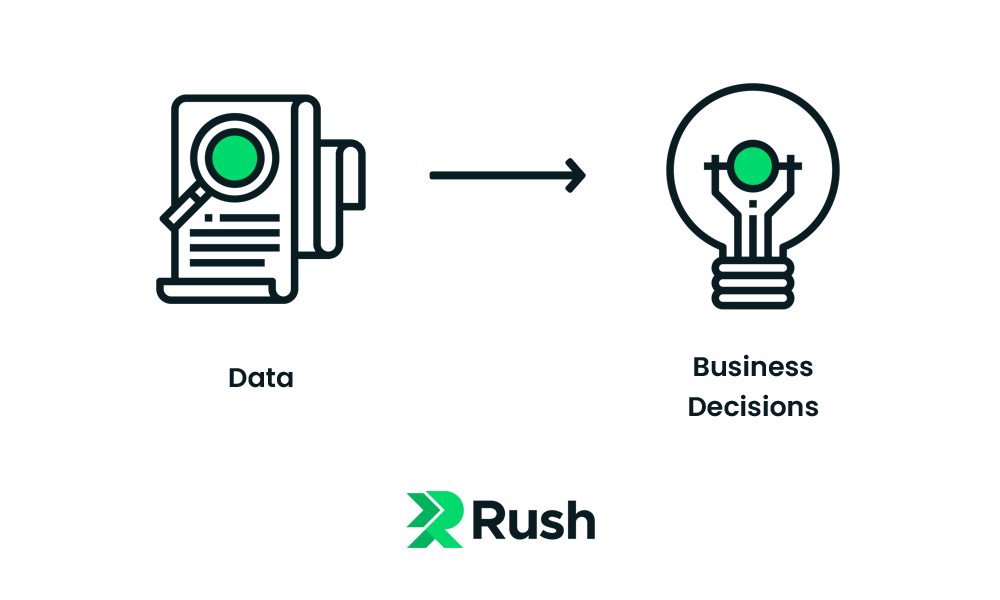
Here’s why metrics matter:
8 Key Metrics for Successful eCommerce Brands
Conversion Rate (CR)
Nearly 40% of eCommerce business owners state that conversion rate is the most important key metric.
Conversion rate indicates the effectiveness of your business strategies to engage and convert your customers.
It affects every other key metric in eCommerce by being the indicator of how well you are converting interested audiences into customers.
You can determine your conversion rate by dividing the number of conversions by the number of visitors and multiplying it by 100.
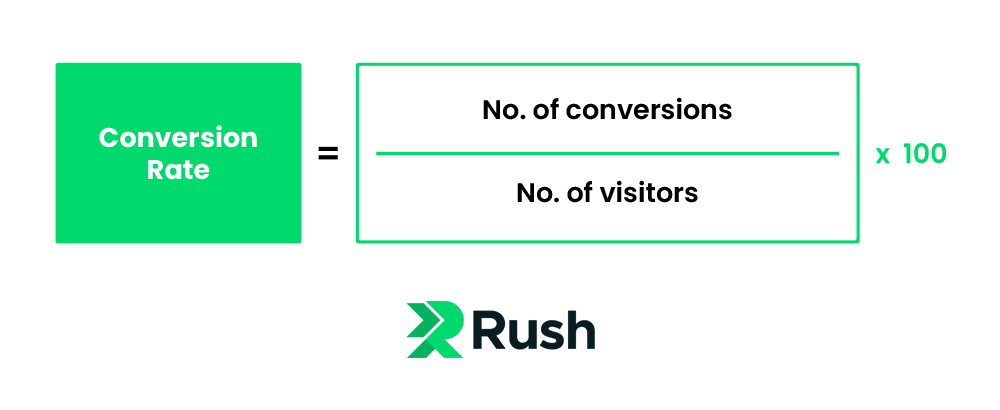
Conversion Rate = Number of conversions / number of visitors × 100
A high conversion rate indicates that your website is well-designed and optimized, your products are compelling, and your marketing strategies resonate with your audience.
Customer Lifetime Value (CLV)
Customer lifetime value is a metric that represents the total net profit a company expects to earn from a customer. It provides a clear picture of a business's financial viability by quantifying the value of a customer over the long term.
You can calculate the customer lifetime value by multiplying the average order value with purchase frequency and customer lifespan.
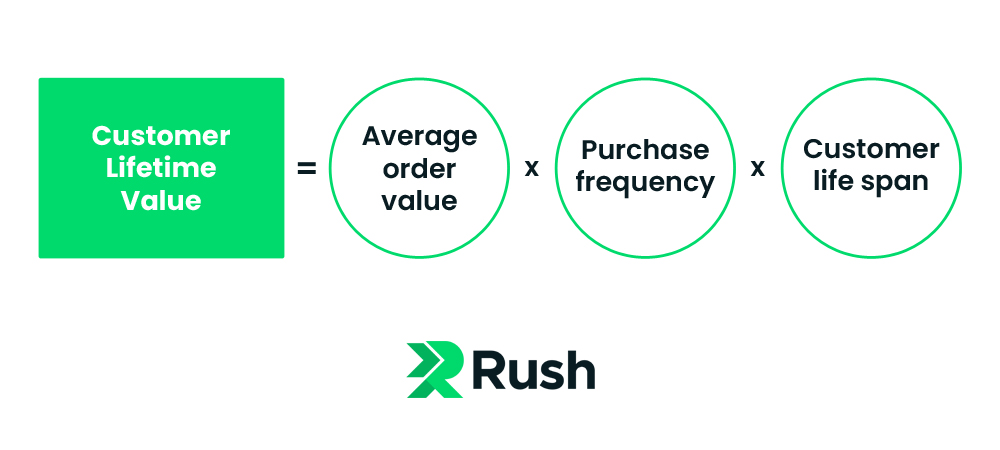
CLV = Average order value X Purchase frequency X Customer life span
Calculating customer lifetime value helps decide how much to invest in acquiring and retaining customers.
You can segment customers into different groups based on their value. It allows you to use more targeted and effective marketing strategies.
Net Promoter Score (NPS)
This metric allows you to determine how likely your customers are to recommend your products or services to a friend.
To determine the Net Promoter Score (NPS), you need to send out a survey to customers. The answer will be in numeric values that will be used to categorize customers into any of the following categories.
Promoters (score 9-10): They are loyal enthusiasts who will keep buying and referring your business in their circles.
Passives (score 7-8): It includes satisfied customers who are vulnerable to competitive offerings.
Detractors (0-6): These are unhappy customers who can damage your brand reputation through negative word-of-mouth.
The Net Promoter Score can be determined by subtracting the percentage of detractors from the percentage of promoters.
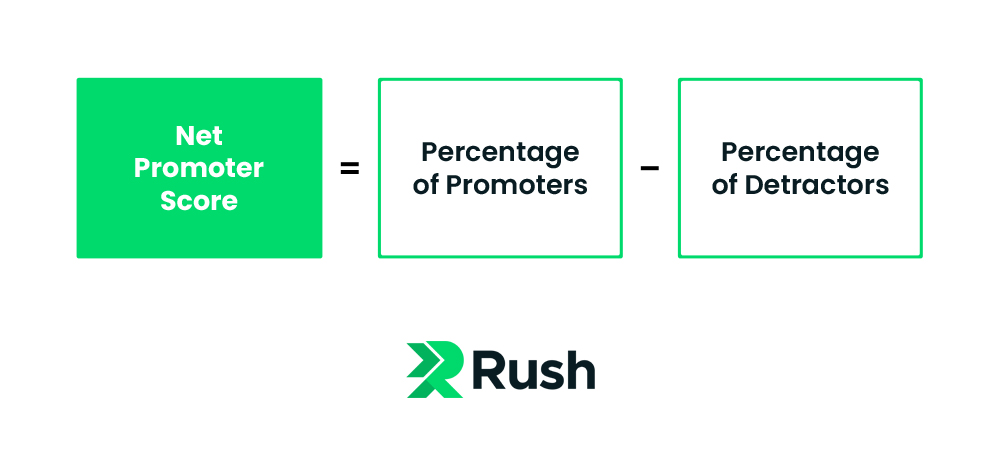
NPS = Percentage of Promoters - Percentage of Detractors
The NPS score can be used to determine customer loyalty — a competitive factor for long-term success in eCommerce.
Customer Retention Rate (CRR)
Customer retention rate is directly linked to the overall business profit and revenue. This metric measures the percentage of customers a business retains over a specific period of time.
According to a report by Bain & Company, even a 5% increase in customer retention can produce more than a 25% increase in profit. A high customer retention rate indicates high customer satisfaction and loyalty.
Here is how to determine the customer retention rate.
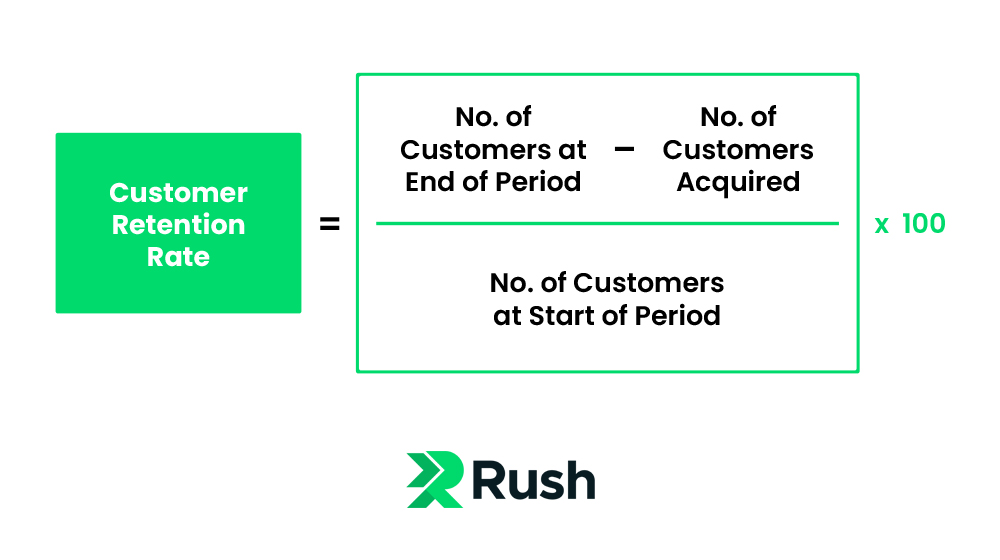
CRR = (# Customers at End of Period - # Customers Acquired) / #Customers at Start of Period x 100
A high CRR indicates that your business is doing good in keeping the existing customers satisfied and engaged. It also correlates with customer loyalty and more referrals.
Average Order Value (AOV)
Average Order Value is an important metric that indicates the average amount spent by customers per transaction over a specific period. A high AOV value indicates that the majority of sales are of more expensive products or cross-selling.
Here’s how to calculate the Average Order Value.
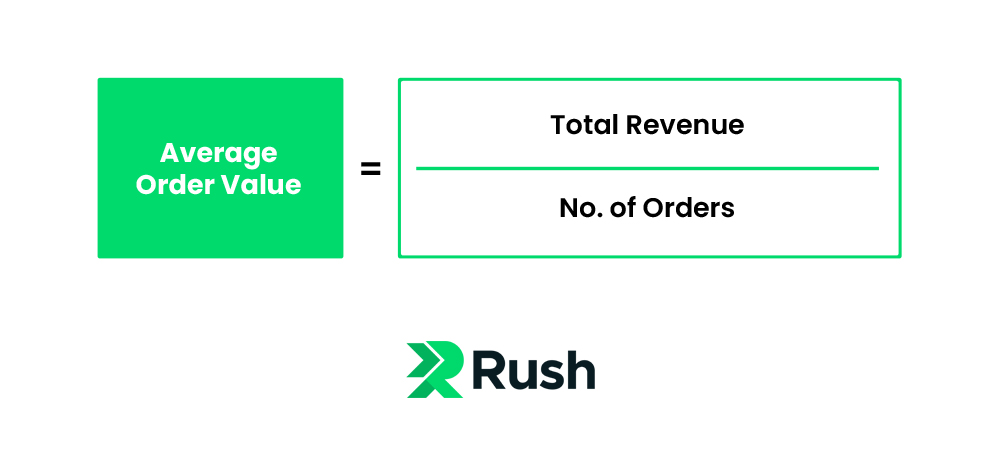
Average Order Value = Total Revenue / Number of Orders
By knowing your AOV, you can allocate marketing budget more effectively. For example, if the cost of acquiring a new customer is less than the AOV, it indicates that the marketing campaign is likely profitable.
Cart Abandonment Rate
Cart abandonment is an unfavorable situation for eCommerce businesses. It is a situation where a customer leaves products in the cart without proceeding to the checkout or cancels the order during the checkout process.
You can determine your business’s cart abandonment rate by dividing the number of initiated transactions by the number of abandoned carts and multiplying it by 100.
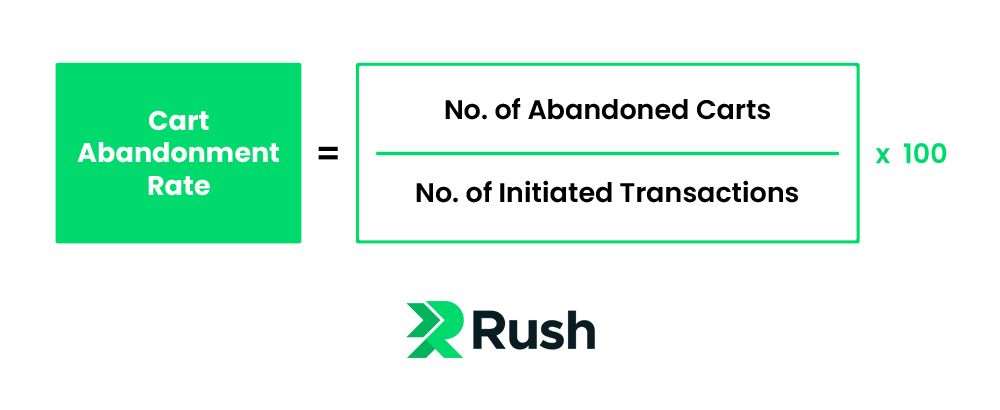
Cart Abandonment Rate = No. of Abandoned Carts / No. of Initiated Transactions x 100
A high cart abandonment rate indicates serious issues with user experience. Customers are less likely to leave products in the cart unless there is a complicated checkout process, unexpected shipping costs, or a lack of payment options.
If the cart abandonment rate of your business is high, it is best to dig deeper into its causes and optimize your strategy accordingly. Perhaps you can retarget your lost customers with irresistible abandoned cart emails and win them back.
Customer Satisfaction Score (CSAT)
It is a commonly used simple metric that indicates how satisfied your customers are with your products or services. It is usually determined by using a single-question survey: “How satisfied are you with our products/service/experience?”
Customers will answer on a scale of ‘very unsatisfied’ to ‘very satisfied’ that will be used to determine the CSAT score.
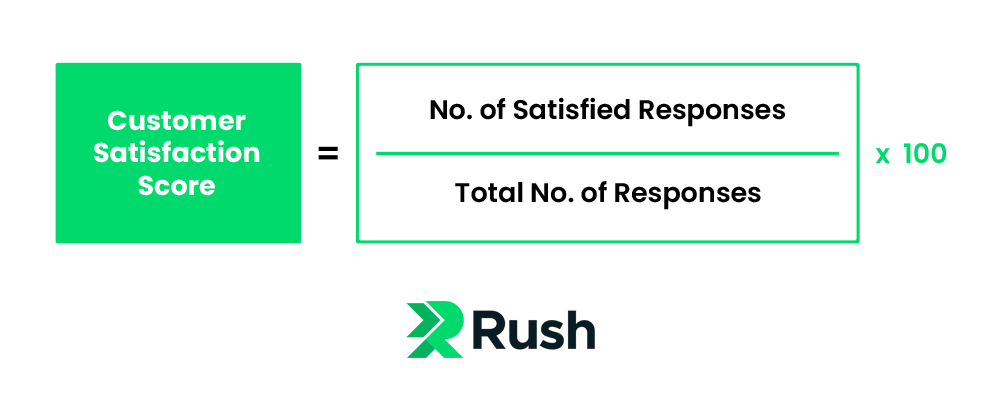
CSAT Score = No. of Satisfied Responses / Total no. of Responses x 100
CSAT surveys are quick and easy and can provide insights on various parameters. A high SCAT score indicates a high number of loyal customers, repeat purchases, and positive word-of-mouth.
Churn Rate
Churn rate is a metric that helps you determine the effectiveness of your products/services and marketing efforts. It is a metric to measure the percentage of customers who stop using your product or service over a specific period of time.
A high churn rate is a critical indicator of customer dissatisfaction.
To calculate the churn rate, you need to divide the number of customers your business lost by the number of customers at the start of the period and multiply it by 100.
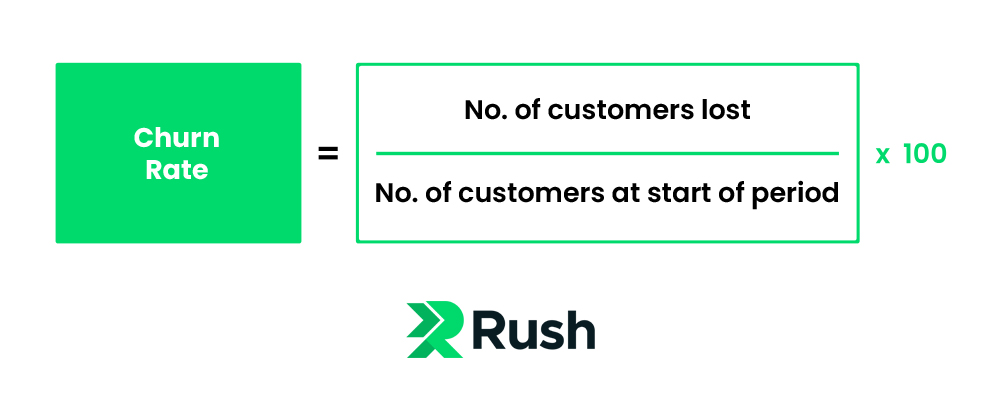
Churn Rate = No. of customers lost / No. of customers at start of period x 100
A high churn rate can become a nightmare for eCommerce businesses. It indicates poor customer retention and loss of recurring revenue and could signal underlying issues with your product, customer service, or overall experience.
Metrics: The Cornerstone of eCommerce Triumph
In eCommerce, a great website and product or service is indeed necessary. However, to roll it out, you need to understand your customers, optimize their experience, and continuously adapt to feedback to meet their needs.
Metrics provide you with a way to improve your business. They provide you with a quantifiable outlook on what is working and what’s not to help make data-driven decisions.
Metrics help you to:
Crafting a Tailored Metrics Strategy for Your eCommerce Success
Determining the right metrics for your business depends on your business goals. If your goal is to acquire new customers, the right metrics to target are Traffic Source, Conversion Rate, and Cost Per Acquisition.
If you want to retain most of your existing customers, you need to have an eagle eye on Customer Retention Rate, Customer Lifetime Value, and Net Promoter Score.
Based on your desired goals, you need to pick the right metrics that offer insights you can act upon. However, eCommerce is a dynamic business, so you should keep the same approach to your metrics.
As your business goals evolve, you need to adapt to new metrics to help you grow in the desired direction
How Rush Helps in Improving Your eCommerce Metrics
Rush is a Shopify app that offers a suite of powerful features designed to enhance your eCommerce store's performance and customer satisfaction. Our pre-purchase feature, with AI-powered estimated delivery dates, ensures that potential customers have the information they need to make a purchase decision confidently.
The pre-shipment status updates help you manage order fulfillment efficiently, reducing the risk of chargebacks and boosting your store's revenue. With smart shipping notifications you will not only keep your customers informed but also create opportunities for post-purchase engagement, increasing your AOV and CLV respectively.
Don't miss out on the benefits Rush can bring to your eCommerce business. Try Rush today with our 10-day risk-free trial and experience the see your customer satisfaction, retention rates, and store conversions skyrocketing.
Elevate your eCommerce game with Rush – where every purchase is a step toward lasting success.
Try Rush now with our 10-day risk-free trial.
